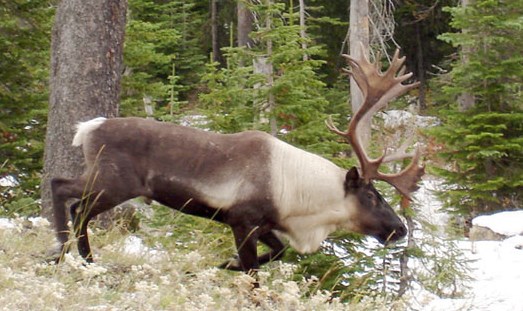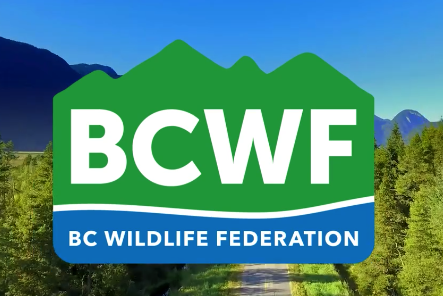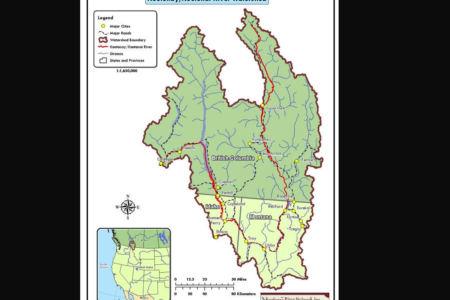Wolves and Mountain Caribou: "Between a Rock and a Hard Place"
By: John Bergenske, Conservation Director for “Wildsight”
I have been involved with mountain caribou since the 1970’s and as Wildsight since the 90’s when we first sponsored caribou research in the Purcell Mountains. It has been clear since that time that there are no simple solutions or easy answers to mountain caribou recovery.
Wildsight’s focus has always been on habitat protection. We have repeatedly countered the argument that the elimination of predators is the answer to recovery. Several years of work with our partner groups in the Mountain Caribou Project (MCP)* included forestry market campaigns that finally brought government and industry onside. In 2006, the provincial government proclaimed the Mountain Caribou Recovery Plan that protects 5.5 million acres of habitat, banning logging and road building in caribou habitat and placing restrictions on motorized recreation. It is not a perfect plan, but I supported the minister for the announcement. Some members of the audience in the BC Legislature asked me afterwards why I looked so serious that day. I responded that it was because I knew the work was just beginning if we were to recover these animals across their range. There had been a lot of pushback to limit recovery and habitat protection only to more robust northern herds, but the scientists and MCP persevered and secured protection for existing herds. Areas where caribou were extirpated received no habitat protection measures.
The Mountain Caribou Recovery Science Team, comprised of leading caribou researchers from across British Columbia, included in their recommendations the need to employ predator control in situations where a herd was below 50 animals and threatened with extirpation by predation. I argued strenuously on behalf of MCP that predator control should only be considered in extreme situations, and then only if targeted specifically at predators who could be shown to be directly preying on the endangered caribou. As a member of the Mountain Caribou Recovery Progress Board (a multi-stakeholder board that is a reference group for the provincial government), I have strongly objected to wide-scale predator control as well as increased trapping and random hunting in caribou habitat. These practices serve no conservation purpose. MCP members were unanimous in supporting predator control only as a final action once habitat protections were in place and specific predators could be linked to caribou losses.
The science team biologists have clearly stated that the logging and road ban that is in place across the South Selkirks covers the needed habitat for the caribou herd. Over the past five years, corresponding to the time when wolves have settled in the South Selkirks, caribou numbers of just under fifty animals (that had been stable and slightly increasing over the previous decade) dropped to 18 animals. In the last year, caribou kills have had both wolf track and wolf DNA present. Radio collared caribou and wolves are sharing the same habitats. The caribou biologists responsible for recovery said that a wolf cull is absolutely necessary to buy time for mountain caribou recovery. The fear is that if predation continues as it has over the past five years, extirpation of the herd is imminent.
It is difficult to accept the necessity of predator control, but to maintain this endangered species and the associated habitat protection it has become necessary. While always accepting that these measures would be needed in extreme situations, we always hoped that it would not be the case. It is unfortunate and sad to be targeting wolves when we know it isn’t wolves that have created this situation. Wolves are far too often scapegoated for human caused problems. And the situation Mountain Caribou are now in is indeed human caused—habitat changes from forestry and recreation have made caribou habitat available to wolves. Wolves are apex predators who are very good at taking advantage of changes that make prey more available. A wolf cull has merit only if large areas of old growth forest are protected, winter recreation in caribou habitat is controlled and steps such as maternal penning are employed to recover caribou numbers to a point that can withstand predation.
Without action, however, there will be no caribou left, and habitat protection reduced. The largest single gains in the Kootenays over the past few years for protection of wild places have been due to the Mountain Caribou Recovery Plan.
Wildsight and our Mountain Caribou Project partner organizations *(The Mountain Caribou Project includes Wildsight, Conservation Northwest, ForestEthics, CPAWS BC, Sierra Club BC, BC Nature, Fraser Headwaters) have been involved with the recovery of Mountain Caribou in the Selkirks and throughout the inland temperate rainforest for over ten years. The Peace River situation is one that we have not been engaged in and are not qualified to speak to.
Habitat Protection and Access Management
Through the Mountain Caribou Recovery Plan, over 5.5 million acres of caribou habitat has been protected across the inland temperate rainforest of British Columbia. In the South Selkirks, a ban on logging and road building has been placed on an area including thousands of hectares of timber harvesting land base, the Dark Woods property was purchased with a priority on reserving caribou habitat, and West Arm and Stagg Leap parks further protect habitat. Much of this habitat has been logged in the past and requires time before it is again suitable for caribou and less attractive to other prey and predators.
Snowmobile restrictions are in place—and always need more enforcement—but compliance has been generally good. Similarly, habitat protections for forests and recreation are in place south of the Canada/USA border.
Mountain caribou provide protection for old growth forests and all dependent species. The provincial recovery plan and the legal case that Wildsight and partners won to have the federal government ensure caribou recovery plans will be very difficult to implement if herds are extirpated.
Where we are now
Restrictions placed on habitat destruction will take time to heal an already fragmented landscape. The worry is that at this moment, the caribou don’t have that kind of time. Wolves are an important part of healthy ecosystems and their numbers are increasing in southern BC. I look forward to the time that habitat restoration and management will allow both mountain caribou and robust wolf populations to thrive.
When attention has shifted from the wolf cull, the government must continue to be held accountable. They must invest in and follow through with the other actions in the Mountain Caribou Recovery Plan, measures such as maternal penning and strengthening and enforcement of the existing restrictions. If not, the wolf cull in the South Selkirks will be even more tragic than it already is.
We can only avoid these types of difficult and unfortunate decisions by managing this unique ecosystem more deliberately to protect biodiversity and unique plant and animal communities.
I do not like to have to be in the position to be the spokesperson for killing any animals, but I find that I must act for the long-term health of the ecosystem and all living things.






















